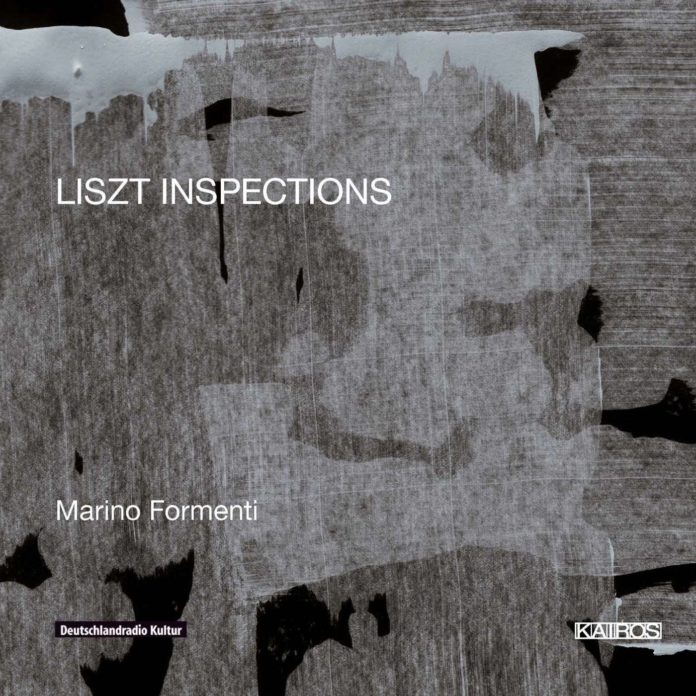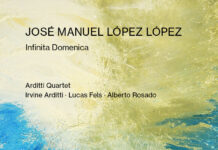Liszt distilled musical rhetoric at the end of his career, attenuated harmonic connections, reduced sonorities, gambled with abrupt juxtaposition and silence, cultivated simplicity, and highlighted the fragmentary. Late Liszt has forced us to rethink the sources of twentieth-century developments such as minimalism, harmonic experimentation, and the redefinition of pitch relationships. Liszt’s spiritualist persuasion and the static surface of the very late music inspire a reconsideration of reductive contrasts between twentieth-century modernism and late nineteenth-century Romanticism.
A Mirror to the Nineteenth Century:
Reflections on Franz Liszt
Leon Botstein
I. Liszt and History
In the clamor of new subjective discoveries about the legacy of Liszt and his progressive insights, the CD Inspections by the Italian pianist Marino Formenti, forms a new field of analysis that is not only the result of considerations viewed from the technical side: with an extensive explanation that pushes a deepening in the territories of the forms (materials, sound, etudes), in the findings of modernistic music (open work, spectralism, constructivism, minimalism, etc.), as well as in the quality suggested by a performance (artistic presence, memory / oblivion, identity), the double CD just released by Kairos, is another example of how the Hungarian had already sensed the possibility of identifying the kind of supernatural power that possessed the arts and in particular the indirect and subtle representation provided by the music: what a poem or an essay can tell by the tone and depth of expression, the music has to tell with sounds and speculations. Our generic memories of Liszt’s music often forget the most thoughtful, less virtuous part of the artist, which has crystallized his spiritual essence: whether they concern the naturalistic observations of his travels, or major life events, Liszt tried to send out to us his intrinsic visions or events; and often there was no full adherence to the classic models imposed by romanticism; in the decadent period the transformation of consciousness was accompanying man’s journey to the end of the twentieth century: the music of Liszt was a valuable ally in a historic moment in which there was also a change in sounds and moods which implied new directions that at the time were not even in embryo: the atonality hinted at in his bagatelle of 1885 is often seen as a worthy forerunner of the great movement created by Schoenberg, just as many musical movements born in the twentieth century (from minimalism to structuralism) were extractions of cells that were placed inside the pentagram of romanticism : Liszt was an advanced ancestor.
In Liszt Inspections, Formenti wants to demonstrate this added value of Liszt, highlight the changes, tying those insights to modern concrete acts; It is like putting fathers and sons together and checking their musical DNA. In this recital, a piece by Liszt chosen by Formenti joins those ideal neighbors Cerha, Ligeti, Rihm, Ustvolskaya, Berio, Feldman, Stockhausen, Sciarrino, Kurtag, Adams, Murail and Pesson; the goal is to demonstrate how our consciences are unchanged over time, arouse similar thoughts, they’re visible in a theme that emphasizes the nostalgia of memory or the soft silence of two notes which open to a brief and definitive comment on the world; this event not only serves to join together similarities and derive the innovative weight of the Hungarian composer, but also in order to establish that a study on the piano (with or without scientific attitudes) may cause an emotional spark that is caged in our minds, as well as in the heart, and that we must free up to contribute that design of the world where “time runs as in a spherical shape.”
_________________________________________________________________________IT
Nel clamore sempre rinnovabile di nuove soggettive scoperte sull’eredità di Liszt e sulle sue intuizioni progressive, le Inspections del pianista italiano Marino Formenti, formano un nuovo campo d’analisi che non è del tutto frutto di considerazioni viste dal lato tecnico: corredato di una corposa spiegazione che spinge l’approfondimento nei territori delle forme (materiali, suono, etudes), dei riscontri modernistici della musica (opera aperta, spettralismo, costruttivismo, minimalismo, etc.), nonché nelle qualità raggiungibili di un’esibizione (presenza artistica, ricordo/oblio, identità), il doppio cd appena pubblicato dalla Kairos, costituisce un ulteriore esempio di quanto l’ungherese avesse già intuito la possibilità di individuare quella sorta di potere soprannaturale che le arti possedevano ed in particolare della indiretta e subdola rappresentazione fornita dalla musica: quello che una poesia o un saggio riesce a dire attraverso il tono e la profondità dell’espressione, la musica deve raccontarlo coi suoni e le sue congetture. I ricordi generici sulla musica di Liszt dimenticano spesso la parte più pensierosa dell’artista, meno virtuosa, quella che forse cristallizzava il suo verbo musicale: sia che riguardasse le osservazioni naturalistiche dei suoi viaggi, sia che incrociasse eventi importanti della vita, Liszt cercava di trasferire al piano l’essenza intrinseca delle sue visioni o degli avvenimenti; e spesso non si poteva parlare di piena classicità o piena aderenza ai modelli imposti dal romanticismo; nella parte decadente di quest’ultimo quella trasformazione della coscienza che stava accompagnando il cammino dell’uomo verso la fine del ventesimo secolo ebbe nella musica di Liszt un valido e sottaciuto alleato: fu anche un cambiamento di suoni, di tenore di essi, che implicava direzioni che all’epoca non erano nemmeno in embrione: l’atonalità accennata della sua bagatelle del 1885 viene spesso considerata come un degno antesignano di quella in pompa magna di Schoenberg, così come tanti movimenti musicali nati nel novecento (dal minimalismo allo strutturalismo) furono estrazioni di cellule che erano sistemate dentro il pentagramma del romanticismo più oltranzista di cui Liszt ne era un avanzato progenitore.
Nelle Liszt Inspections, Formenti vuole dare dimostrazione di questo valore aggiunto apportato da Liszt, evidenziare le trasformazioni, legando quelle intuizioni ai concreti atti moderni; è come mettere padri e figli assieme e verificarne il loro dna musicale. In questo recital in cui ad un brano prescelto di Liszt si affiancano quelli idealmente vicini di Cerha, Ligeti, Rihm, Ustvolskaya, Berio, Feldman, Stockhausen, Sciarrino, Kurtag, Adams, Murail e Pesson, l’obiettivo naturale è quello di dimostrare come le nostre coscienze siano immutate nel tempo, suscitino esigenze simili, un filo conduttore che privilegia la nostalgia del ricordo o il silenzio sommesso di due note che aprono ad un commento sintetico e definitivo del mondo; non serve solo per appiccicare somiglianze e derivare il carico innovativo dell’ungherese, ma anche per acclarare che uno studio sul piano (con o senza attitudini scientifiche) può provocare quella scintilla emotiva che è ingabbiata nelle nostre menti, oltre che nel cuore, e che dobbiamo assolutamente liberare per contribuire a quel disegno del mondo in cui il “tempo gira come in una forma sferica”.







